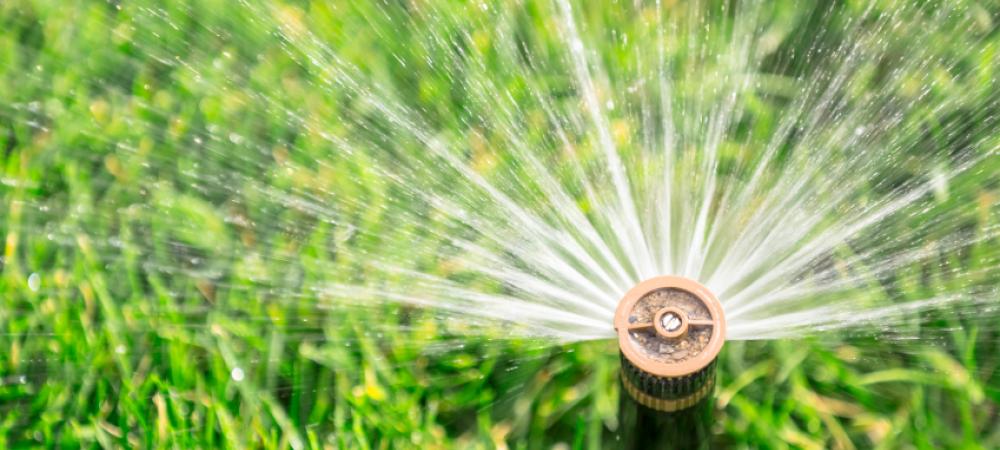How Often Should You Water Your Lawn in Western Pennsylvania?

Keeping your lawn lush and green in Western Pennsylvania can be a balancing act, especially with the region's unpredictable weather and seasonal shifts. Whether you're a new homeowner or just trying to improve your curb appeal, one of the most common questions is: how often should you water your lawn?
The answer depends on several factors, including grass type, soil composition, and the time of year. In this blog, we’ll walk you through the best watering practices tailored specifically for lawns in Western PA.
Factors That Influence Watering Frequency
Before you set a schedule, it's important to consider what makes your lawn unique:
- Soil Type: Clay-heavy soil, which is common in parts of Western Pennsylvania, retains water longer than sandy soil. Loamy soil offers a good balance of drainage and retention.
- Grass Type: Most lawns in this region feature cool-season grasses like Kentucky bluegrass, fescue, or perennial ryegrass. These types thrive in cooler temps but can go dormant in extreme heat.
- Weather Patterns: Frequent spring rains and humid summers can change your watering needs from month to month.
- Sun Exposure: Lawns with full sun will need more water than shaded areas. Sloped yards may experience more runoff and require longer watering times.
General Lawn Watering Guidelines for Western PA
In general, your lawn needs about 1 to 1.5 inches of water per week, including rainfall. Here’s how to break it down:
- Frequency: Water 2–3 times per week, not daily. This encourages deeper root growth and reduces the risk of fungal issues.
- Duration: Aim for 20–30 minutes per zone depending on your sprinkler system. Adjust if you're using manual sprinklers or a hose.
- Best Time to Water: Always water in the early morning (before 10 a.m.). This reduces evaporation and allows grass to dry before nightfall, preventing mold and disease.
Seasonal Watering Tips
Spring:
As temperatures warm, your lawn begins to grow again. Spring usually brings consistent rainfall, so supplemental watering may only be needed during dry stretches.
Summer:
This is the most critical watering season. Hot, dry conditions may require more frequent watering—sometimes up to three times a week. However, avoid shallow daily watering, which can lead to weak root systems.
Fall:
As temperatures cool, gradually reduce watering. Your lawn is still active, and maintaining moisture helps strengthen roots before winter dormancy.
Winter:
No watering is needed during winter months. Grass goes dormant and natural precipitation is typically sufficient.
Signs You’re Overwatering or Underwatering
Your lawn will tell you if it’s unhappy. Here are some signs to watch for:
Overwatering:
- Mushy soil
- Fungus or mold growth
- Runoff or pooling water
- Yellowing grass despite ample watering
Underwatering:
- Dry, brittle grass
- Footprints that linger on the lawn
- Grass blades curling or browning
To test moisture, push a screwdriver into the soil—if it goes in easily, your lawn likely has enough water.
Smart Watering Tools and Tips
To make watering more efficient:
- Use a rain gauge or an empty tuna can to measure how much water your lawn receives.
- Invest in smart irrigation systems that adjust based on local weather conditions.
- Mow your grass higher (around 3–4 inches) to shade roots and reduce evaporation.
- Leave grass clippings on the lawn to act as natural mulch.
Western Pennsylvania-Specific Considerations
Western PA experiences moderate rainfall and a mix of hot summers and cold winters. If your lawn is sloped, water slowly to prevent runoff. Shaded areas may retain moisture longer and require less frequent watering.
Check with your local municipality during drought periods, as some areas may have water restrictions or suggested usage guidelines.
Contact the Local Lawn Experts
A consistent watering routine can make all the difference in keeping your lawn healthy, especially in a region like Western Pennsylvania where the seasons can be unpredictable. By watering deeply a few times per week, monitoring weather and soil conditions, and adjusting for seasonal changes, you’ll set your lawn up for long-term success.
Need help managing your lawn care or setting up a proper watering schedule? Contact Lawn Sense for personalized advice or seasonal service plans tailored to your yard’s unique needs.